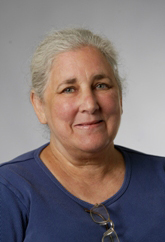Home Cytometry History Individual Histories Alice Givan

Alice Givan

My story, while lacking drama, may be a good example of how anyone can become a flow cytometrist.
I grew up in Brooklyn, New York and always loved science, even before I knew what it was. I loved collecting leaves in the Brooklyn Botanic Gardens, I loved looking at dinosaurs at the American Museum of Natural History, I loved making rafts from popsicle sticks in the gutters in front of our apartment house, and I loved looking for orange salamanders almost everywhere. In high school, I said I wanted to be a scientist (How did I know that? I don’t think I had ever met a scientist…). On my first day of college orientation, I did see a scientist. By my senior year, I was doing a project in his laboratory. It was on nutritional biochemistry of Tetrahymena pyriformis (still no flow cytometry, but now at least I knew what a scientist was and, indeed, I was becoming one).
In graduate school, my thesis was on the photosynthetic electron transport chain of the unicellular green alga Chlamydomonas reinhardi. Again, no flow cytometry, but there were occasional mentions of light absorption and fluorescence.
Off to England for twenty years, with initial work on photosynthesis, but then many years of floundering. Do I need to tell you about Newcastle University’s limit of six years for those working on soft money? I had some publications, had two terrific children, and then reached the six-year-limit; I could no longer work in any capacity at the University. So, I did some teaching and lots of writing of job applications and lots of complaining (and lots of yelling at my husband). I loved teaching for the Open University – but I was not being a scientist.
Then, in 1985, there was a job advertised at Newcastle University Medical School. It was for a flow cytometrist to run an instrument in the Department of Surgery. No matter that I had never heard of a flow cytometer: this job was paid from National Health Service funds, so technically I would not be working for the University. Hooray! I applied for the job and got it (I guess in 1985 very few other people had heard of a flow cytometer either, so the competition was not great).
I learned what a flow cytometer was, learned how flow cytometry was important in cross-matching kidneys and hearts with prospective recipients before transplant surgery, and learned how my knowledge of fluorescence from long ago was useful still.
I worked as a flow cytometrist for six years in Newcastle, England, then for fifteen years at Dartmouth Medical School in the United States, and here I am. I am director of the Flow Cytometry/Fluorescence Imaging Core at the Norris Cotton Cancer Center/Dartmouth Medical School in New Hampshire. I do some research. I do lots of training and teaching. I am writing the third edition of Flow Cytometry: First Principles.
I think of myself as a scientist, but also as a flow cytometrist. I now know what both of those things are. And I know that, with a bit of persistence, anyone can do it.
